
Designing and building an energy efficient SMART HOME
"The swimming pool has its own Internet address"
Why do the project
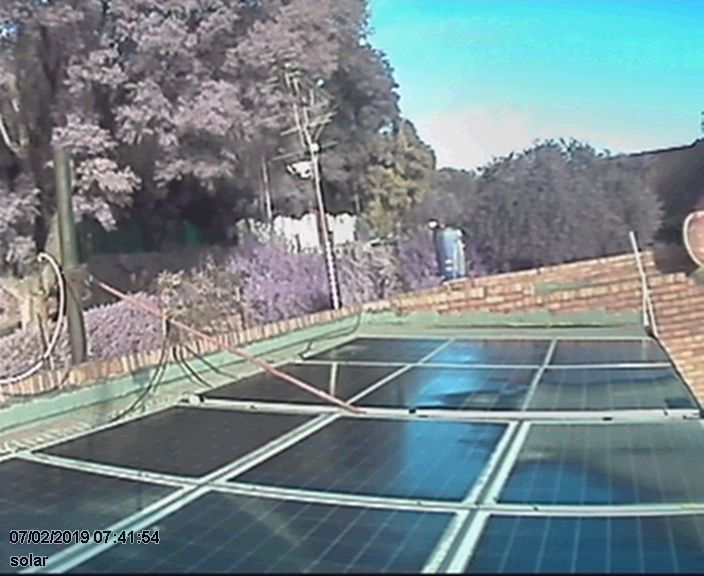
Solar array mounted on outbuilding roof
Four banks of three 250watt panels each mounted in an antitheft frame and each frame feeding a grid tie inverter typically at 24 volts DC
What we have learnt
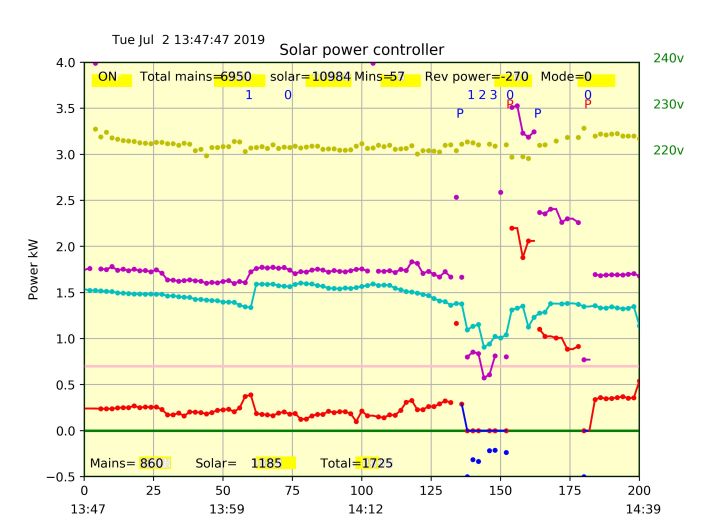
Graph of power control done via a Raspberrypi processor.
Blue is solar energy,
Red is extra power from city council - overgenerating when goes below zero axis (shown as dark blue)
Purple is total power used (solar and city council)
Numbers 1,2,3 refer to control of individual grid tie inverters to shut off part of network- 0 is all grid ties are working
Letter P indicates swimming pool motor control (Red is ON and blue is off)
Khaki graph uses right hand axis and shows instantaneous voltage from city council
Numbers
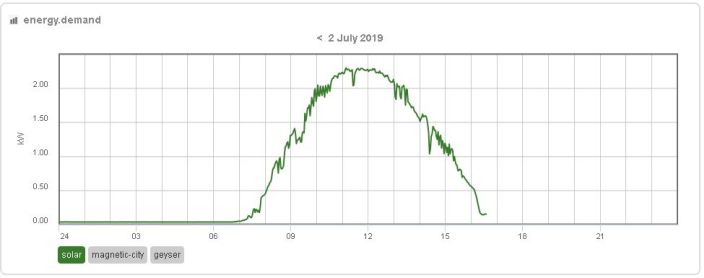
Solar power generated on one day in winter
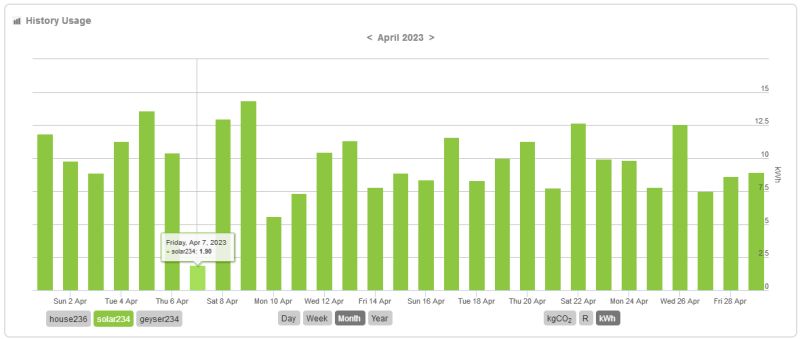
Solar power generated over the month of April 2023 (294KwH)
<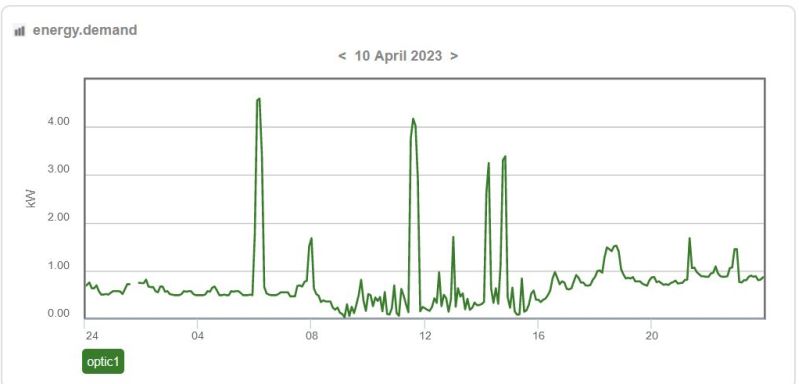
Typical profile of electricity supply from council.
Project phases
Solar panels
Grid Tie inverters
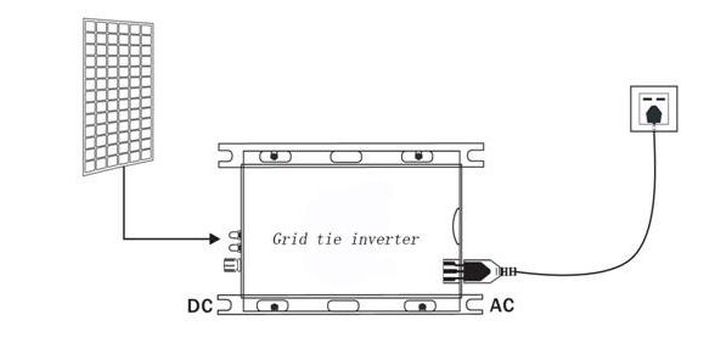
Connecting a grid tie inverter to mains.
Power measurement systems
Basic calculations
Batteries - not useful
Track record.
Built a solar system in 2014 and have generated approx. 33000kwh from a system costing approx R30000. Have a 21.6 sq meter system of 21 panels and 7 mini inverters controlled by a computer to throttle down power when not needed.System can generate up to 3kwatts peak and maintain at this capacity if needed. Generate about 15kwh per day. Have no batteries and use municipal power to deal with peaks such as geyser, stove and motor startup. Generate about 60% of our daily needs from solar. Author is an Electrical Engineer educated at Wits University in the 1970s.
Getting help and advice
This description is provided to show how easy it is to get going. I am not selling anything, just encouraging users to take the first step.
You can contact me for help and advice from Mike at info@rapidttp.co.za Tel +27 72 992 6040
1 May 2023
Also see an article on Cost effective solar systems for South African conditions
Also see an article on battery storage systems
Also see an article on Solar water heating - solar geysers
Also see an article on Measuring systems for solar systems
Also see an article on Gridtie inverters -Converting solar energy
Also see an article on Stand alone inverters -Converting battery energy
Also see an article on Energy equivalents
info@rapidttp.co.za







